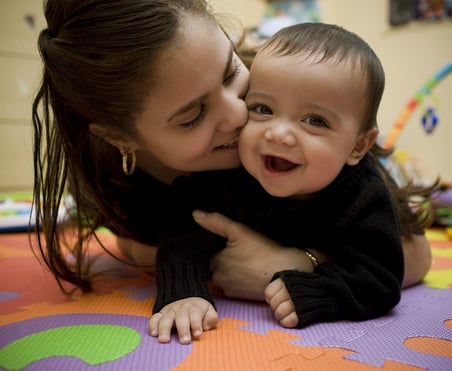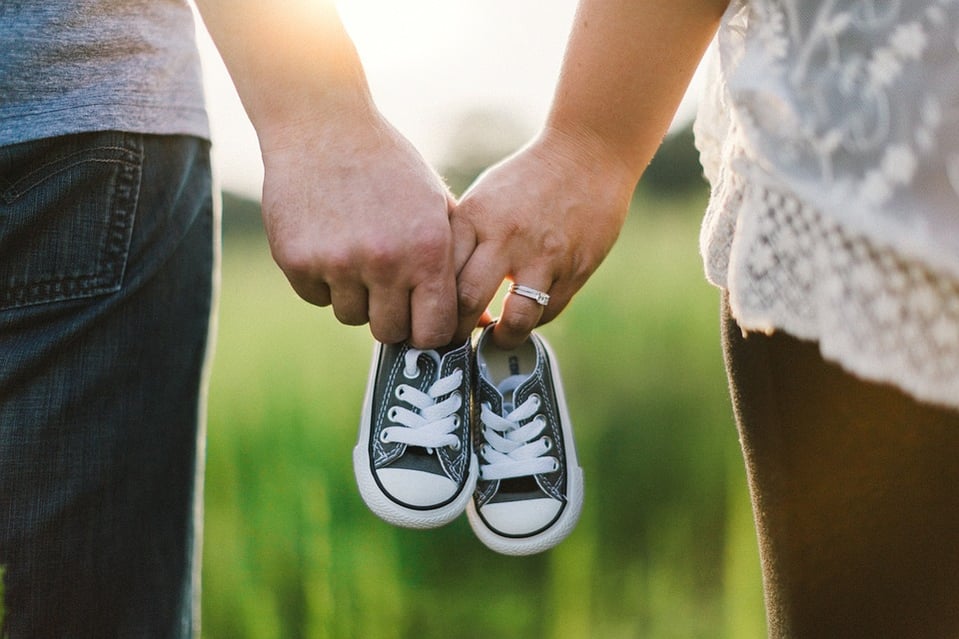
Until very recently in our history, adoption was something that was treated as a big secret. Birth mothers would many times be hidden away during their pregnancy and expected to return home as if nothing happened. They would rarely get to see their child grow up. Adoptive parents many times hid the truth from their adopted children, treating it like a shameful secret. Many adoptees were surprised as adults with the news of their adoption. Open adoption did not begin to become commonplace until the 1970’s and 1980’s, when research began to show that open adoptions were better for children.
Thankfully, the world is much different today. Birth parents, adoptees, and adoptive parents now enjoy an amazing level of openness surrounding adoption. It has been elevated from a big secret to a big way of showing love.
New York State allows and supports birthparents who chose an open adoption plan.
Open Adoption is an adoption choice that is often chosen by a birth mother seeking to find an adoptive family for her unborn or newly born child.
Because of the relatively recent emergence of open adoptions, there are still lingering fears and misconceptions about what open adoption actually is, and what it means to be a part of one. Here is what open adoption really is:
- Open adoption is a choice made by the birth mother and father. An open adoption is where a birth mother (and/or father) choses to have an ongoing relationship with the child and the adoptive family she has chosen to place the child with.
- Open adoption begins before the child is born. In most cases, the birth mother chooses prospective adoptive families she wants to meet based on profiles provided to her by the adoption agency. After meeting the families, she makes a decision to begin her adoption plan based on what family she thinks will be the best fit for her child. The birth mother and the prospective adoptive family then have until the birth of the child to get to know each other and form a relationship.
- In an open adoption, the birth parents and adoptive parents work on a Post-Adoption Contact Agreement (PACA) They decide when and how often the birth parents and the child visit and when the birth parents receive pictures and letters. Some birth mothers want to spend time with the child once or twice a year. Some only want occasional pictures and letters to update them on the child’s life. It is different for each birth parent, and depends on what they want and what the adoptive family is willing and able to provide. These agreements often evolve over the years. Each agreement is as individual and unique as the family.
- Open adoption gives the birth mother and father peace of mind. They do not have to worry about how their child is doing, where they are, and what kind of person they are growing up to be. They get updated along the way and get to see their child grow in the love of the adoptive family.
- Open adoption ensures that the child knows who their birth parents are, and that they care about them and love them. They never have to ask who their birth parents are. Children who have this information never have to go through the agonizing process of trying to locate their birth parents. They are simply always a part of their life.
- Open adoption allows the child to ask questions relevant to them and their adoption story throughout their life. This could be as simple as “What did my birth mommy look like when she was a baby?” or as important as “Do I have a genetic predisposition to breast cancer or diabetes?” In any case, it allows the child to have important social, medical and genetic information available to them throughout their life, whenever they need it.
- Open adoption is an adoption choice that provides much joy for all members of the adoption triad - the birth parents, the adoptive parents and most importantly the child. Family Connections encourages birth parents to work with an adoption agency that supports open adoption options and consider having some form of an openness with the adoptive family.
Some families hoping to adopt are afraid of open adoptions. Much of the time this is due to what they do not know about them. They may be afraid that the birth parents will try to take the baby back when he or she gets older. They may be afraid of the child wishing to have stayed with their birth parents. They may simply be anxious about meeting and having a relationship with the person who is the biological mother of their child, or the people who may become the mom and dad of the child. There are many reasons why people are initially hesitant about open adoption, and these anxieties are understandable. The vast majority of families find there is are nothing to worry about, and here are some reasons why:
- Before an adoption plan is made, birth parents are counseled on all of their options. They make an adoption plan for their baby because they love their child and want the best for him or her. They carefully choose the adoptive family and would not place the baby with that family if they had doubts. Birth parents almost never try to “take back the baby.” Every precaution is taken to make sure that the choice to place the baby is what the birth parents really, truly want.
- From the moment the adopted child is placed in the arms of the adoptive parents, that child is their son or daughter. They should not worry about the child possibly in the future wishing they were not adopted. Every child, and adult for that matter, has fears, anxieties, and desires for something different. This is part of being human, and is the same for biological children as it is adopted children. Everyone has different stories, and with each story comes individual wishes for what might have been. In the end, families are built on a foundation of love, and that foundation keeps them together no matter what DNA they may or may not share.
- The initial meeting between birth mother and adoptive parents can be nerve-wracking. It is important to remember that everyone involved is just another person. They are just people who are trying their best to make a great life for a child. Everyone involved has the same goal: to provide an unborn child with a loving, nurturing, safe and stable home. Going into the initial meeting with a calm, open mind works out for the best. Birth parents and adoptive parents to not fit one mold. Do not expect the adoptive parents to be pictures of perfection, and do not expect the birth parents to be a picture of unstable disarray. Neither of these stereotypes are correct, and that is because both sides are human and products of circumstances that are as widely varied as the colors of the rainbow. The relationship between birth parents and adoptive parents is based on what nearly every other relationship is- human connection, plain and simple.
Birth parents and adoptive parents should not be afraid of open adoption. It is a loving and wonderful choice. Open adoption is good for the birth parents, good for the adoptive parents, and above all, good for the child.




Let Us Know What You Thought about this Post.
Put your Comment Below.